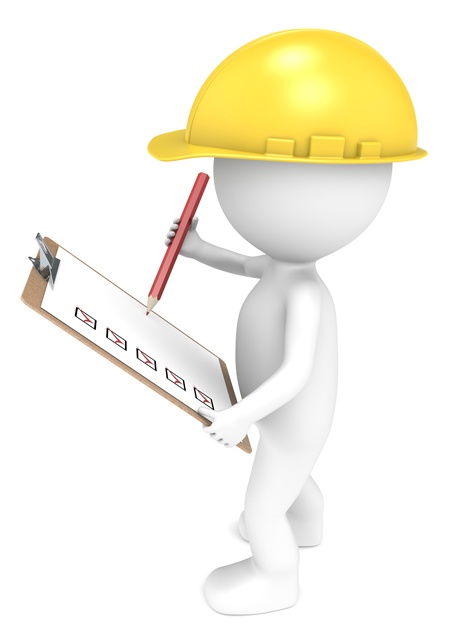Easy Solutions to Legacy Software for Manufacturing
Many companies cling to dusty, inefficient software, hindering production and holding back shop floor growth. In a few simple steps, you can move...
2 min read
 Kristin McLane
:
December 14, 2016 at 11:22 AM
Kristin McLane
:
December 14, 2016 at 11:22 AM

 With any software system, there’s a balancing act between flexibility and standardization. Where flexible solutions give you agility, standardization is sustainably repeatable. You need both in a system for your shop floor.
With any software system, there’s a balancing act between flexibility and standardization. Where flexible solutions give you agility, standardization is sustainably repeatable. You need both in a system for your shop floor.
Manufacturing utilizes negotiable and non-negotiable rules to manage work and deliver repeatable processes. Enterprise software solutions need to support these processes and change the “negotiable” rules where it is necessary.
A recent visit to a small airport showed the importance of accommodating change.
You see, I travel a lot. It’s standard practice for airlines to reward frequent travelers with perks like early boarding or a special boarding area.
This trip, I was at an airport too small for a special area. So, at 7 in the morning with a crowd of tired and frustrated travelers seething because the plane was hours late, the oblivious gate agent rolled out this threadbare red carpet to welcome the frequent travelers.
“Please step off the mat,” she told a few weary travelers that were anxious to board. The comment didn’t go over well as the one or two frequent travelers in the crowd hurried onto the plane and the rest were instructed to step back a few feet so she could roll up the carpet.
People argued. I could understand. It was early, and many passengers had been waiting for more than an hour. “It’s not me,” she said. “It’s the airline policy.” The gate agent proceeded to calmly roll up the carpet, carefully put it away, and then settle back to her place at the gate.
 Manufacturing Software and Production Agility
Manufacturing Software and Production AgilityI’ve run this chain of events through my mind. I can relate to the need for processes and consistency. For manufacturers and others, repeatable processes are a sure sign of success… unless they aren’t.
Consider what “process and consistency” cost the company in this situation.
Did the benefit to the few customers that qualified warrant what looked like an entitlement for the rest? Was it worth forcing angry and exhausted customers to continue standing on sore feet while you rolled up a stupid carpet no one in their right mind really cared about? Add to that price the loss of goodwill you would have gained if you just let the passengers on the plane.
Consistency and repeatable processes are critical for modern manufacturing, but flexibility and the ability to adjust to market conditions is a growing priority. Manufacturing software should manage change as well as consistent processes.
Systems that can’t manage change are going to limit a company, rather than increasing efficiency or competitive advantage.
There are two types of systems on the market – forms-based and workflow-based systems, and each manage change on the shop floor very differently.
A forms-based system uses forms, or fields for data, in the software. Users input data in one field, tagging the information, and retrieve it in another. It’s easy to use and operate, but limiting when it comes to managing change. If you don’t have the right form or fields, the shop floor will struggle to accommodate changes to processes.
Workflow-based systems are more effective at managing change. A workflow system is designed to support a series of work activities that lead to completion. A change in processes or work requires only a simple change or addition to the workflow being supported by the software.
Reports are run on data collected by the system or the users, making it easy to run the reports required by the customer. You’re not bound by what data you can retrieve from the forms in the software.
With workflow-based software users can adjust their processes to accommodate change and still use the software as intended, rather than trying to cobble together a solution outside the scope of the system they purchased.
 In the case of the clueless gate agent… the shop floor manager could see how current processes weren’t supporting conditions on the shop floor, and could adjust the workflow as needed, without having to contact the supplier for a new form.
In the case of the clueless gate agent… the shop floor manager could see how current processes weren’t supporting conditions on the shop floor, and could adjust the workflow as needed, without having to contact the supplier for a new form.
There would be no need to piss off the customers so you could roll out a carpet. Everyone leaves happy.
Want to learn more, or see how a workflow-based system works? Contact CIMx today for a free demonstration of our software.
Many companies cling to dusty, inefficient software, hindering production and holding back shop floor growth. In a few simple steps, you can move...

Manufacturers are continually looking for ways to improve, but are reluctant to actually embrace change, leading many businesses to become stuck in a...

In this virtual and connected world we live in a website should represent who you are and what you do. You can learn a lot from a manufacturing...